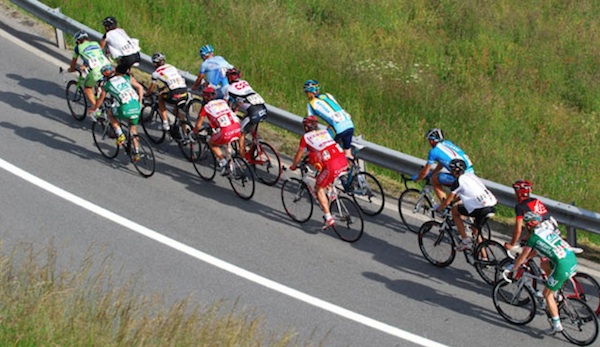 Biking alone is actually much easier than biking in a large group. The tips in this article will list some general rules for biking in large groups for fun and not as a race. Group rides and races are two separate events and require two sets of skills. Keeping that in mind, here are some tips for biking in large groups.
Biking alone is actually much easier than biking in a large group. The tips in this article will list some general rules for biking in large groups for fun and not as a race. Group rides and races are two separate events and require two sets of skills. Keeping that in mind, here are some tips for biking in large groups.
1. Do Not Start A Race
When you begin riding, do not try to muscle your way into a position. Group rides are not the time to strain your muscles and show your strength. You’ll more than likely cause a wreck or make someone upset. Here you are trying to create friends, not enemies.
2. Bar-To-Bar Alignment
The safest formation for a group ride is by pairs (also known as a double paceline). Each pair should line up their handlebars and maintain a speed that is comfortable for the both of them. Pairs that will not tire easily should stay in the front of the group.
3. Moving To A Back Position
If you or your partner start to feel tired, the best thing you can do is move to the back of the pack. This will keep you from slowing down the riders behind you and getting in their way. The best way to accomplish this movement is for the both of you to ease to the side. The riders behind you will ride forward in-between you. You and your partner should then slow your speed and come together again where there is ample room. If you think you’ll have to be careful to get into a space, assume the space is too cramped and dangerous to try to move into. Always err on the side of caution in order to avoid accidents.
4. Being Second Is Equally Important As First
If the front pair moves to the back you have to be prepared to lead the group. If you don’t think you can handle this physically, keep to the middle and back of the pack. You can maintain your position by letting others have the right of way and rejoin the group in front of you.
5. No Gaps!
Good riding formation does not allow for any gaps. Don’t ride tire to tire but don’t leave glaring holes either. If you spot a gap, ease up to fill it. Try not to change your pedaling speed too much as you can throw off the balance of the group.
6. No Sudden Movements
The worst thing you can do when biking in large groups is to make a sudden move or turn. Also, never suddenly change your speed or slam on your brakes. When moving positions, filling in gaps, or steering to avoid road damage and obstructions, always move gradually. This will give the person behind you time to notice and react to your movements.
This tip also requires that you pay close attention to what’s going on around you. Look ahead in the road, follow the movement of the person in front of you but look well ahead of them to see upcoming obstacles, and do not wear headphones in case you need to hear someone shouting a sudden warning.
7. How To Signal
Except in an emergency, group cycling etiquette calls for hand signals over verbal signals. This is because a shout can be easily missed but to someone paying attention, a hand signal is mostly unavoidable. Signals should be simple and agreed upon by all riders before the group starts out.
8. Obstacles
If you’re in the front, your primary responsibility is to spot trouble coming your way. As a rule, if you don’t think the obstacle can cause damage to the people and bikes behind you, don’t bother pointing it out. If the obstacle isn’t immediately in front and can’t be hit when people change positions, don’t bother with it either. Basically, keep an eye out but don’t be annoying.
Biking in large groups requires some practice. If you’re nervous, stick to the back of the pack and really watch the people around you and how they maneuver. Just keep going, keep calm, pay attention to your group and surroundings, and, most importantly, enjoy yourself!